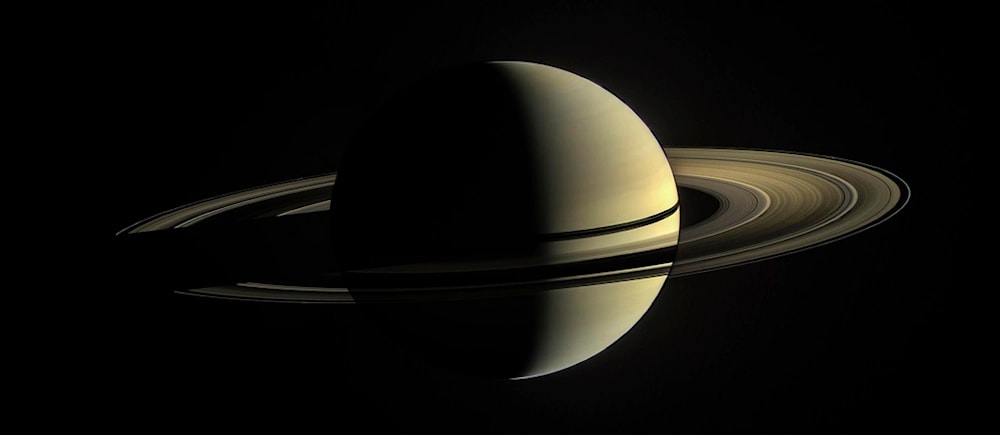Saturn claims 'moon king' title with 128 new moons, discovery shows
The discovery was made using the “shift and stack” technique, which involves capturing sequential images of a moon’s trajectory and combining them to enhance visibility.
-

This January 2, 2010, image made available by NASA shows the planet Saturn, as seen from the Cassini spacecraft. (AP)
Astronomers have identified 128 new moons orbiting Saturn, solidifying its dominant position as the planet with the most moons in the solar system, The Guardian reported on Tuesday.
Jupiter had previously held the record, but with this latest discovery, Saturn now boasts a total of 274 moons—nearly twice as many as all the other planets combined.
The research team had already identified 62 Saturnian moons using the Canada-France-Hawaii Telescope. After detecting faint indications of additional moons, they conducted further observations in 2023, leading to this breakthrough.
"Sure enough, we found 128 new moons," confirmed the lead researcher, Dr. Edward Ashton, a postdoctoral fellow at the Institute for Astronomy and Astrophysics at Academia Sinica in Taiwan.
"Based on our projections, I don’t think Jupiter will ever catch up," he suggested.
As of February 5, 2024, Jupiter has 95 confirmed moons.
The newly discovered moons have been officially recognized by the International Astronomical Union and have been temporarily designated with numerical and alphabetical codes. Eventually, they will be named after deities from Gallic, Norse, and Canadian Inuit mythology, following the established naming convention for Saturn’s moons.
Most of these new moons belong to the Norse group, prompting astronomers to search for additional Viking deities to name them after. "Eventually the criteria may have to be relaxed a bit," Ashton remarked.
The discovery was made using the "shift and stack" technique, which involves capturing sequential images of a moon’s trajectory and combining them to enhance visibility. All 128 new moons are classified as "irregular moons"—small, irregularly shaped objects just a few kilometers in diameter.
The growing number of such discoveries raises questions about how to define a moon, The Guardian indicated.
"I don’t think there’s a proper definition for what is classed as a moon. There should be," Ashton noted. However, he suggested that, with current technology, the limits of moon detection may have been reached.
"With current technology, I don’t think we can do much better than what has already been done for moons around Saturn, Uranus and Neptune," he said.
Read more: US Space Force advances plans for 'Golden Dome' missile defense system

 2 Min Read
2 Min Read








